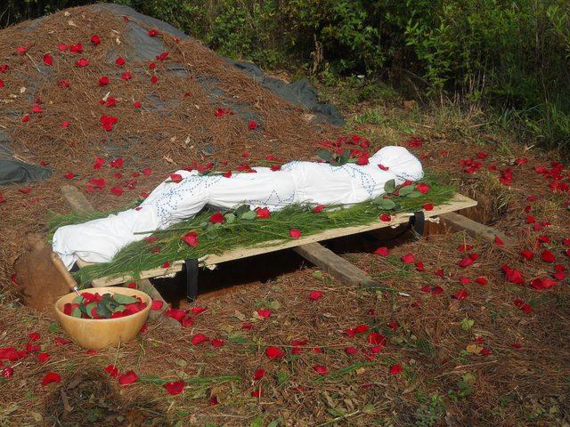How do you want to die? "Not at all" isn't an option. We're all what Dickens called "fellow passengers to the grave." Let's try again: "How do you want to die?" Cue in 'good death'. Being at peace, feeling a sense of control, being supported by loved ones, knowing your life had purpose and having your affairs in order - these are all are trademarks of the good death.
There's a growing movement to bring engagement with death back into our culture, through death salons, home funerals, green burials and thoughtful end-of-life care. Make death a part of your life. That means committing to staring down your death fears- whether it be your own death, the death of those you love, the pain of dying, grief, corpses, bodily decomposition, or all of the above. Accepting that death itself is natural, but the death anxiety and terror of modern culture are not.
In the last 20 to 30 years, the world has become a global community where we don't have to live and die in the towns we were born, nor do we have to share our parents believes. We are able to choose the rituals we perform with our dead and how we dispose of dead bodies. We can think much bigger about the future of death. How we die is, after all, how we live.
We oversimplify dying. When we imagine how and where we may die we envision, on the one hand, being tubed and wired every which way in an ICU or, on the other hand, laying in a pillowed bed with birds chirping, the dog or cat nestled close, and a harp playing.
In today's world the likelihood is that we'll land in a range of situations besides these two clichéd extremes. Windrum's Matrix of Dying Terms for the first time identifies and neutrally names the full range of sixteen dying situations ahead of everyone in the 21st century. By assigning names to the places where we may end up, the Matrix helps us aim for the deaths we want and away from the deaths we don't want.
Talking about deaths we do want, more and more people choose to have home funerals: either on their own or with the help of death midwives. A home funeral happens when a loved one is cared for at home or sacred space after death, giving family and friends time to gather and participate in.
Another increasingly popular option in the good death arsenal is a green burial. Green burial or natural burial ensures that a burial site remains as natural as possible in all respects. A body is placed in a bio-degradable casket, shroud or a favorite blanket - think 'final episode of 6 Feet Under'. There is no embalming fluid and no concrete vaults.
A natural burial site promotes growth of native trees, shrubs and wildflowers - bringing birds and other wildlife to the area. Water is not wasted and no chemicals are used to maintain a green burial site. A green cemetery allows nature take its course.
I hope you have found something in the good death arsenal that resonates with you and you want to make it your choice. I encourage you to keep exploring on your own.
How do you want to die?
Check out the TEDx presentation that inspired this article. The talk was given on April 17, 2015 at TEDxofUofIChicago.
Photo Credit: Courtesy of National Home Funeral Alliance, By: Greenhaven Preserve, SC.
